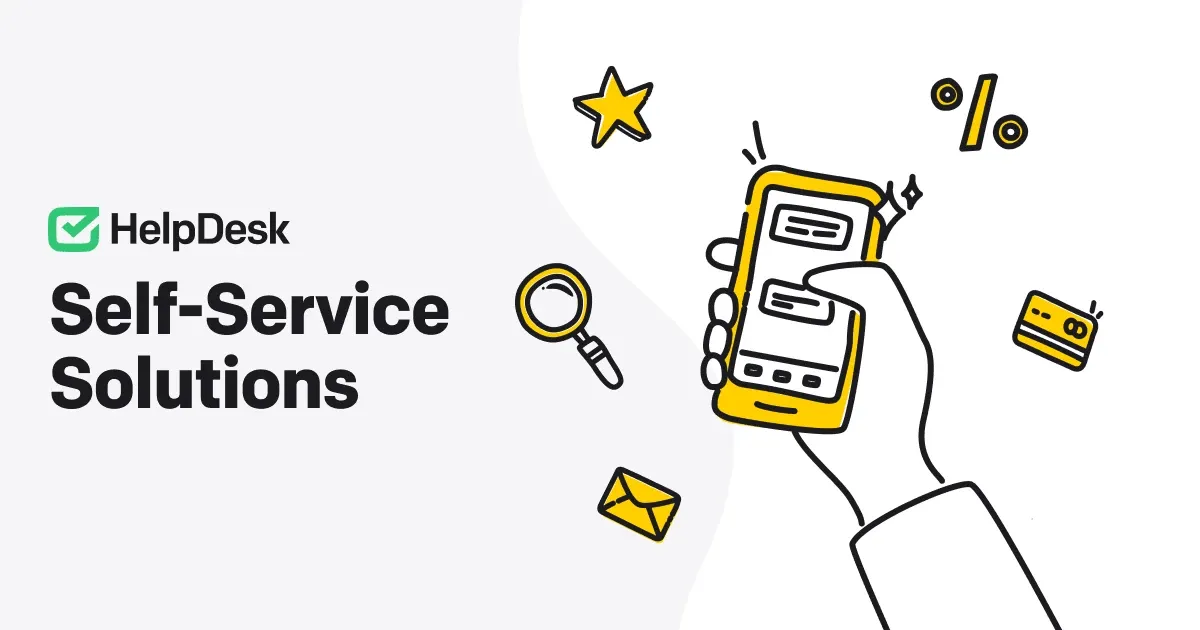End-user support is the strategy for where users go when they have a problem with the technology they’re using. This assistance is meant to help them resolve issues, answer any questions they may have, and get them to use the product most effectively.
Traditionally, end-user support is provided by IT or customer support teams. This could look like help desks, call centers, or ticketing systems. Forums have also come into vogue to scale support operations.
This is no new concept. It’s been around for probably as long as the SaaS industry has, but how teams are looking at it is beginning to shift as the cracks become more apparent. The traditional end-user support strategies can lead to slow response times, bandwidth problems with your support team, and an overall reactive approach.
That’s why more cutting-edge technology is becoming popular in this arena to help evolve the way that teams approach end-user support. And both companies and users are benefitting from it.
The rise of AI and automation
Traditional call centers or live online chats can be slow and frustrating, too often putting people on hold. And because of how critical low wait times are for the customer experience, this is unacceptable for many users.
Chatbots were devised to help solve this problem, but old-fashioned bots, especially simple, rule-based ones, can be even more frustrating. I’m sure you’ve been in this position before. You know that you’re not going to get the right answer from the bot, so you just have to go through the motions and make the minimum number of engagements before you can finally get the option to talk to a human.
[Graphic]
From human agents to AI agents
Conversational AI tools built on increasingly stronger algorithms that are more and more able to mimic human speech (and more importantly, human understanding), are beginning to shake this previously negative experience up.
Virtual support agents like Copilot pull real humans out of the process as much as possible, without sacrificing the end-user’s experience. Users get the speed of a bot with the conversational feel of talking to a human.
With tools like this, which can take into account context, tone, and other things that a human would, users are able to ask questions in their own language and get immediate answers. They don’t have to overthink things anymore and try to tweak their language to be as precise as possible so the robots understand.
These new AI-driven support tools can go deeper than just answering questions, though. They can take immediate action.
Let’s say that someone is confused about how to change a certain setting in your product. Instead of the AI agent explaining how the user can navigate to those settings, or even providing a link to the page where they can make the change, the AI can actually make the update for them or give them the power to make the update right from the chat.
The introduction of conversational AI in an end-user support strategy is perhaps the greatest opportunity because it shifts tasks away from your staff, but it also makes it easier, quicker, and more enjoyable on the user side.
I mean, who doesn’t want a virtual assistant at your beck and call 24/7 without the guilt of feeling like you’re annoying them by asking them to do too much? AI agents never clock out, and they’re happy to work around the clock.

Predictive support
The ideal scenario, when you’re planning how to tackle end-user support, is to have fewer problems to remedy in the first place.
That’s where predictive support comes in clutch. Teams (whether IT, customer success, or product) can feed data into predictive models to identify potential or emerging issues and nip them in the bud before they become major problems.
The data used can vary depending on what teams have available or what’s most relevant to their product/customer base. Some common sources of data, though, are
- Feedback from a formal survey or in-app pop-up survey
- Insights from social listening on social media channels
- Data from service tickets
- Or more advanced methods that can use a slew of historical data
So how would this look in practice?
In one possible scenario, you may identify a correlation between a certain customer segment and the number of support tickets they submit and/or churn. You may put in place guardrails specifically targeted at this segment to cut down on support needed or issues experienced, like emails with helpful tips or a deeper onboarding process.

More self-service options
You know how basically every generation gets more allergic to talking on the phone? Even an email may drive someone to overthink. Whether it’s out of this social-anxiety-driven aversion to interacting with businesses or an “I can do everything myself attitude,” the people are demanding the tools to be able to do things themselves.
So support teams are beginning to take a more proactive approach to end-user support by giving more robust options for those who want to seek out the answers on their own. Not only does this fill a very real need for users, but it also takes some pressure off of your support team who would have otherwise been tasked with handling the issue.
One of the highly effective methods is to create a more personalized knowledge base for users to interact with.
Salesforce is a great example here. Here’s how they optimize the knowledge base experience to make it easier for users to find the answers they need:
- Content adapts dynamically based on a user’s role, location, and profile so they’re only seeing the most relevant content
- Their search is AI-enhanced, meaning that the more a user interacts with search, the better the platform can predict what they want to know
- Users can also provide feedback on support articles, helping Salesforce to identify gaps they need to fill
Companies are also increasingly beginning to integrate more interactive knowledge materials within their products. Instead of having to navigate to a separate knowledge base, there are many tools available now to provide product tours, helpful pop-up tips, announcements, and onboarding checklists directly in the product experience.
Another thing to note when it comes to your knowledge base is that the better, more robust materials you have in it, the better fuel you have for the AI tools that you’re using for support.
[graphic]
Integration of augmented reality
While not quite in the mainstream in SaaS, many more companies are starting to experiment with augmented reality in end-user support. AR has shown many promising benefits like an increase in the first-time fix rate, fewer errors, better customer satisfaction, and an expanded reach of your support team.
Mercedes’ Ask Mercedes AR tool helps with self-service, giving users the ability to point their phone at a part of the car and get more information about what it is and what it does. While this example is in automotive, this same concept can be clearly transferable to SaaS where users can point their phone at their screen and get real-time tips on how best to use the features in front of them.
This can also be helpful for support teams who have highly complex implementations. For companies who are used to flying their teams out for on-site implementations or support, remote assistance could help their team to visually guide and collaborate with customers no matter where they are in the world. Moreover, these companies should consider providing equipment for remote workers to ensure seamless connectivity and effective support.
Better end-user support = better users
As we look to the evolution of end-user support in 2024, it's evident that adopting advanced technologies like AI, AR, and data analytics is not just about helping users solve their problems better—it's about creating better, more engaged users.
The best-case scenario is one where support is quick, effective, and proactive, blending seamlessly with the rest of the user experience.

















